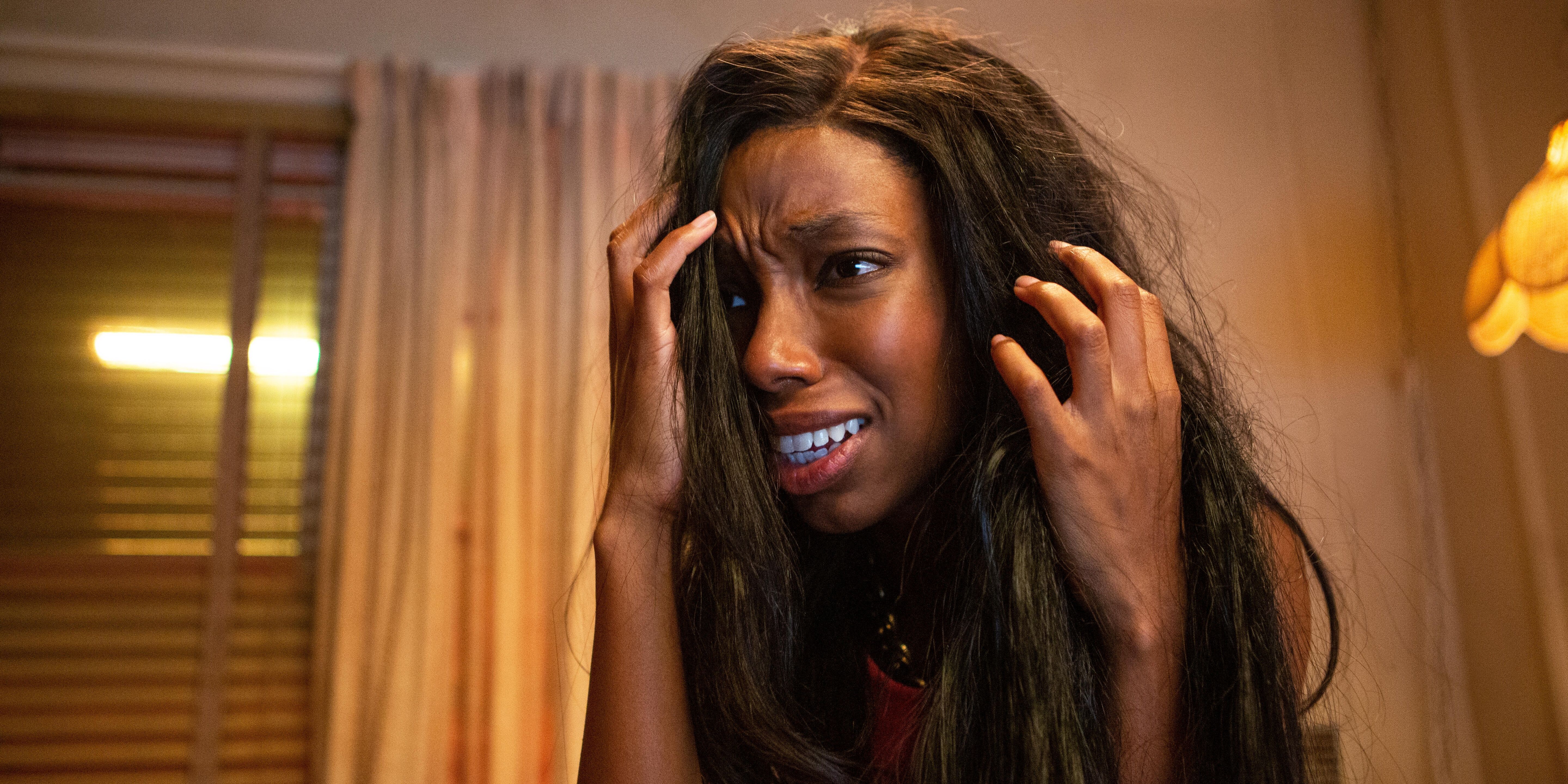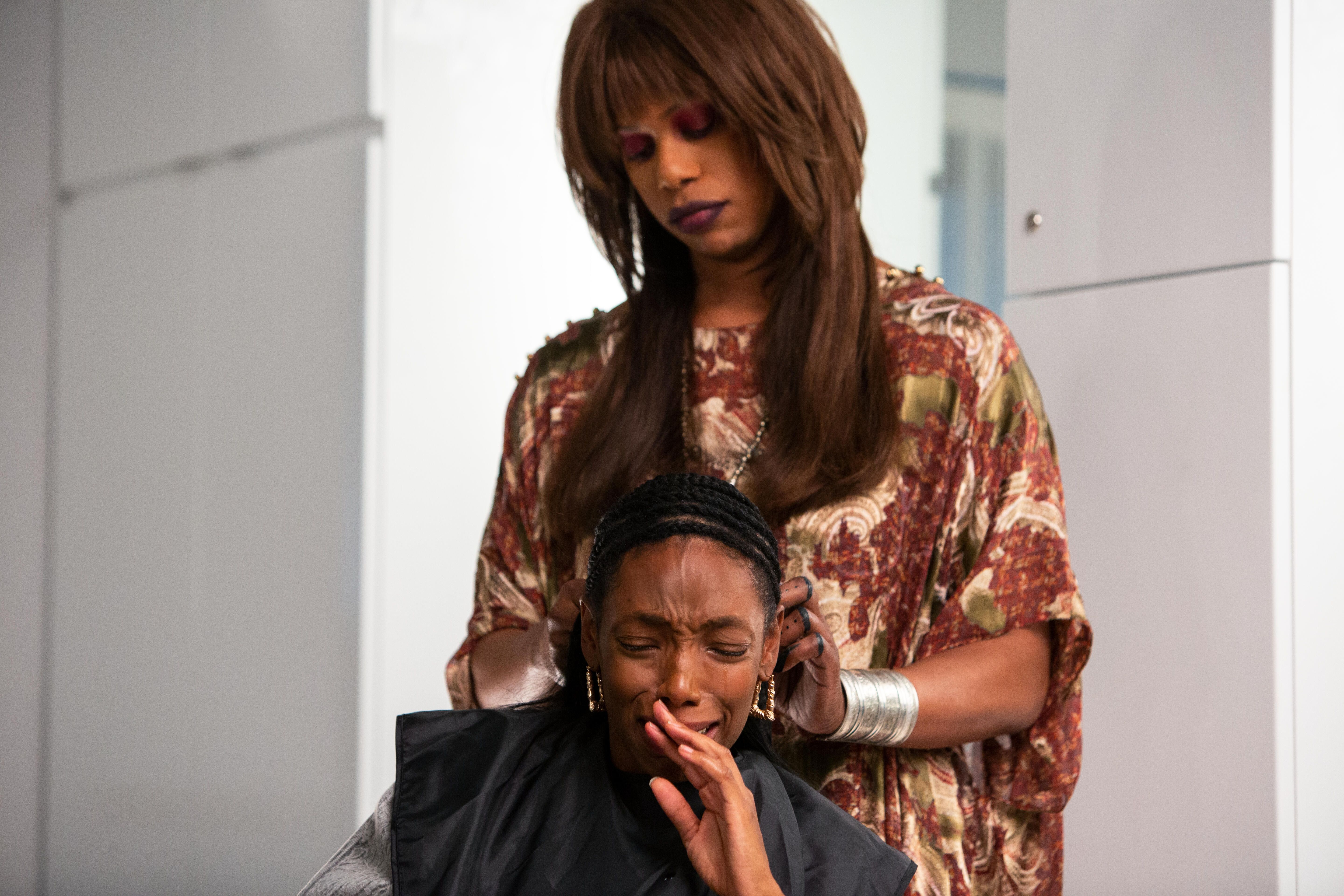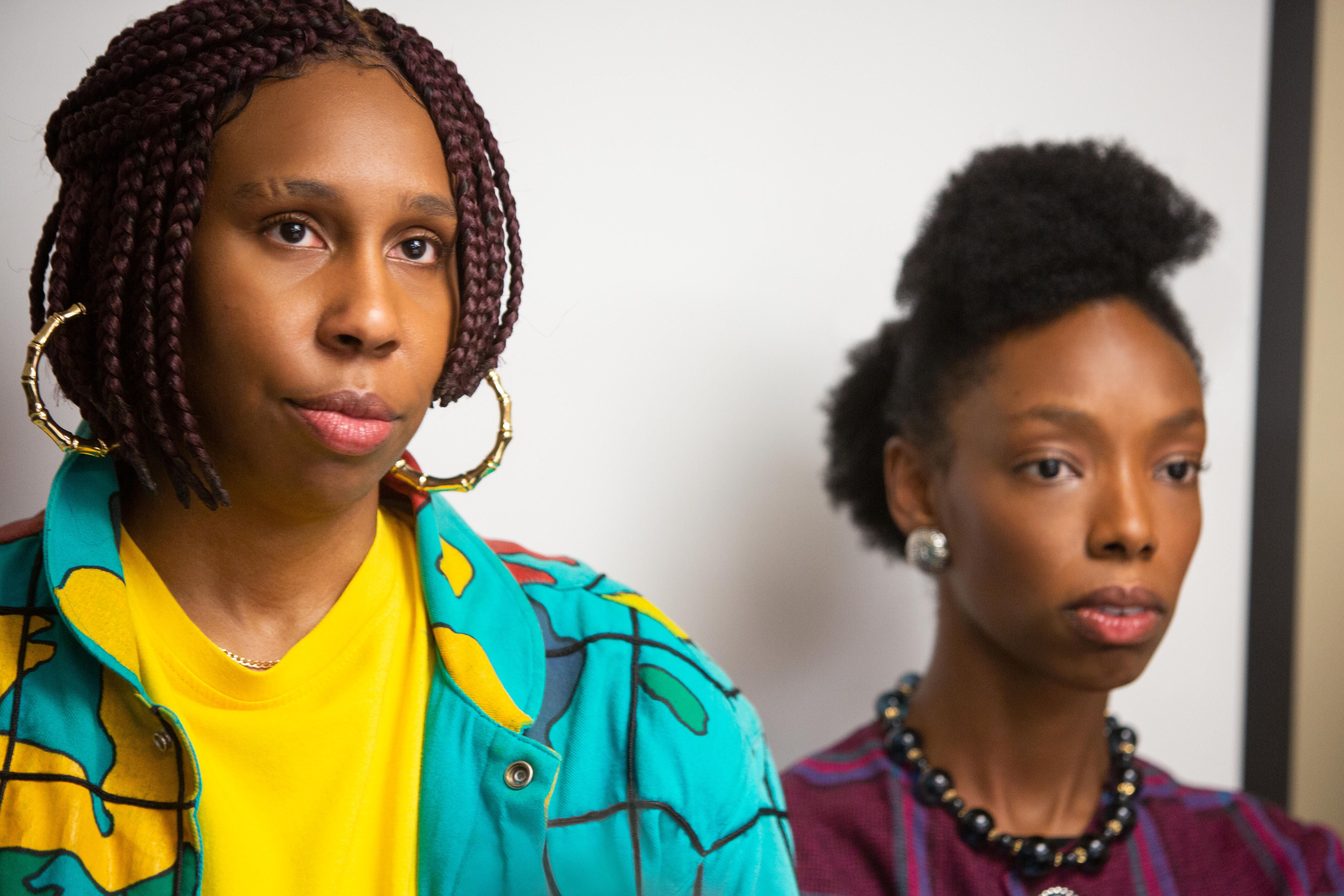There are two different movies that never quite reconcile themselves in Bad Hair, the second feature film from Dear White People writer-director Justin Simien. The first is a sharp satire partially inspired by the early days of cable channel BET, with the movie set in Los Angeles in 1989 at a TV network called Culture, which is in the process of evolving from a serious reflection of Black life in America into a music-driven MTV clone capitalizing on the burgeoning mainstream popularity of hip-hop. Young assistant Anna Bludso (Elle Lorraine) has been working at Culture for four years without anyone listening to her ideas for new shows or taking her seriously as potential on-air talent.
But when Culture’s previous head of programming gets the boot for being unwilling to change with the times, she’s replaced by former supermodel Zora (Vanessa Williams), who is very interested in Anna’s pitch for a daily video countdown show, and is also eager to please the white boss (an amusingly unctuous James Van Der Beek) who wants her to court viewers beyond the channel’s niche. Simien has a strong sense of the time period, and a clear perspective on the way that Black culture is co-opted by the white establishment, something he’s explored extensively in Dear White People, both the 2014 film and the subsequent TV-series adaptation on Netflix.
But Bad Hair isn’t just a smartly observed comedy about the evolution of hip-hop culture at the end of the ’80s. It’s also a horror movie, which begins with the weave that Anna feels pressured to get in order to fit in at the rebranded Cult and to get her shot at becoming one of the channel’s VJs. She goes to a salon recommended by Zora, where a vaguely sinister stylist (Laverne Cox) sews in a weave in a scene that is shot and scored like a torture session from a slasher movie. That’s because the weave itself is evil, or possessed, or something. Anna’s professor uncle (Blair Underwood) gives her a book on slave folklore that recounts a story of evil hair, but there are also references to Native American mythology and the harvesting of human hair from India.
It’s never entirely clear why the weave turns homicidal, but it goes from getting a taste of blood from a paper cut on Anna’s finger to racking up a serious body count, in a transition that shifts Bad Hair from its vibrant Spike Lee mode into something out of J-horror. Simien clearly has fun with the over-the-top horror of the film’s final act, and while it’s not exactly scary, it’s entertainingly gruesome and sometimes suspenseful. Connecting the societal horrors that Black women endure to appear acceptable to white and/or male colleagues with actual deadly horrors is a clever concept, but it works best in the earlier part of the movie, when Anna is subjecting herself to a painful beauty routine rather than dealing with full-on supernatural dangers.
In her first major role, Lorraine is both sympathetic and determined as Anna, and the supporting cast is full of talented performers, sometimes only in brief roles. Williams clearly relishes the chance to play the villain, both as the corporate sell-out and as a more paranormal presence, and Jay Pharoah is entertainingly sleazy as Anna’s insensitive love interest, a fellow VJ who’s more concerned with his career (and his own carefully constructed hairdo) than with Anna’s feelings. Lena Waithe, Robin Thede and Dear White People’s Ashley Blaine Featherson all add humor as fellow Culture employees adjusting to the channel’s new direction.
Beyond Simien’s pitch-perfect sense of 1989 hip-hop music, fashion and TV, the filmmaker also creates a whole soundtrack’s worth of impeccably crafted period-accurate pop songs, mostly sung by the movie’s fictional Janet Jackson/Whitney Houston figure, Sandra (Kelly Rowland). Sandra serves as the embodiment of Black crossover success, and she’s another customer of the salon that peddles the evil weaves, but she’s not much of a character, and it’s not apparent whether she partially owes her success to some kind of of sinister pact. It’s the songs, rather than the character, that make Sandra memorable, and Simien has such an impressive ear for pastiche that his next project ought to be an outright musical.
When it premiered at the Sundance Film Festival back in January, Bad Hair was 13 minutes longer than the version now being released, and it still suffers from some choppy pacing, especially in a mid-film time jump that covers the makeover from Culture to Cult. Despite its unevenness, Bad Hair is full of so many creative ideas and inventive touches that it’s nearly always engaging, and Simien gets the most out of his entire cast. The various elements may not always fit together, but each one is plenty of fun to experience on its own.
Starring Elle Lorraine, Vanessa Williams, Jay Pharoah, Lena Waithe, Blair Underwood, Laverne Cox, Michelle Hurd, Ashley Blaine Featherson and James Van Der Beek, Bad Hair opens Friday, Oct. 16 in select theaters and premieres Oct. 23 on Hulu.



